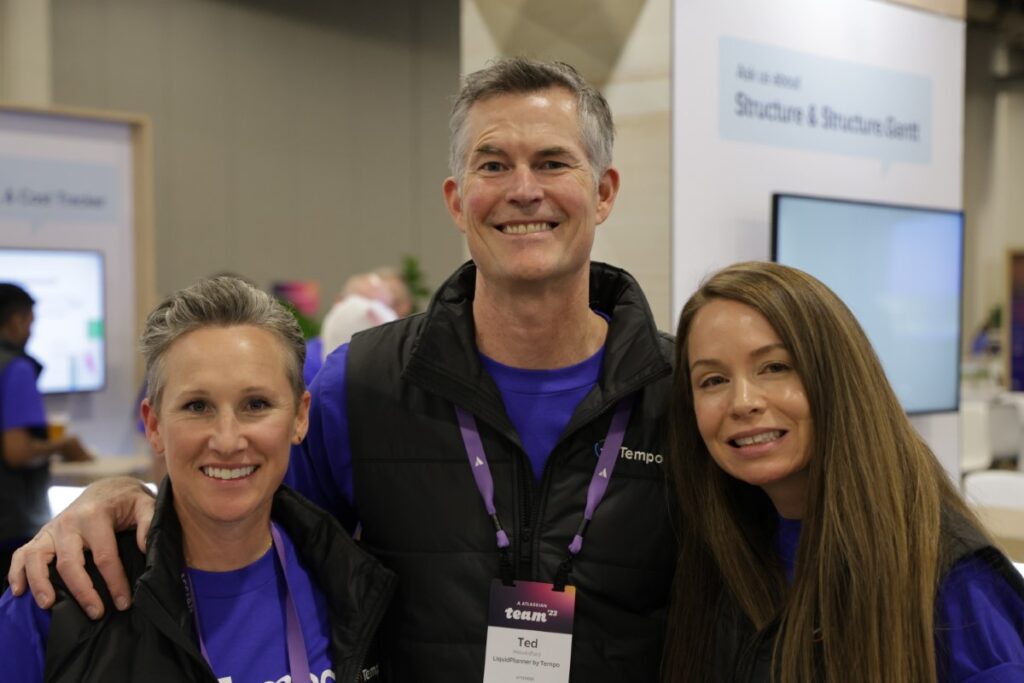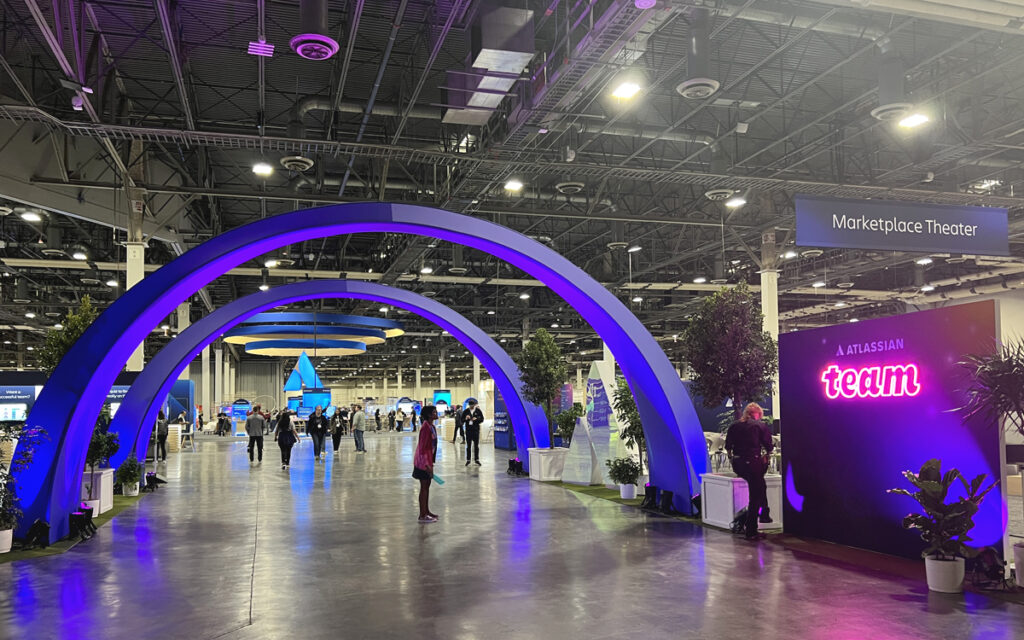This past week we traveled to Las Vegas for Team ’23, Atlassian’s annual conference celebrating teamwork and collaboration. This year’s theme, “Impossible Alone. Possible Together,” resonates with us now more than ever. LiquidPlanner was recently acquired by Tempo; while we remain a stand-alone product, the relationship expands opportunities to progress further in our roadmap, build sought after integrations, and explore future innovation.
Throughout the week, we met hundreds of people who were as eager to hear the LiquidPlanner story as we were to share it. “What happens in Vegas, stays in Vegas,” couldn’t be further from the truth in this case – conversations continue back in the office.
Predictive scheduling is a game changer
So many teams are working to solve real-world problems through the products they build. Along the way, they need a solution like ours to create realistic plans for achieving their goals. They crave insights that help them understand whether circumstances require a complete pivot or slight adjustment. Their questions are universal:
- When will my project finish?
- When can my team take on new work?
- How much work can my team put into a project, sprint, or release and still finish on time?
It’s always fun to see someone in that aha! moment during a demo when they realize predictive scheduling answers those questions. Eyes light up as they envision how it could unlock their team’s potential:
- Work on the right things at the right time.
- More confidence around delivery dates.
- Less burnout and stress for everyone involved.
LiquidPlanner was built to help teams forecast reality-based schedules and rapidly adapt to change.
There’s going to be a Jira integration too
As we immersed ourselves in the scene, we were also on an intelligence-gathering mission for our latest product initiative, a Jira integration.
The brainchild for LiquidPlanner + Jira integration came about while exploring the feasibility of our partnership with Tempo. LiquidPlanner customers have always shown a lot of interest, hoping we’d pursue it. We weren’t confident about tackling it on our own but in this new relationship, we can figure out how to make it possible, together.
Step one was establishing a proof of concept (POC). We set out to determine if we could take information from a Jira environment and bring it into LiquidPlanner so the predictive scheduling engine can tell whether or not teams will meet their deadlines based on the amount of work planned and the resources involved.
Our POC was a success, and we finished the prototype just in time to demonstrate it at the event.
Here’s how it works
The integration syncs both platforms so changes on one side are reflected on the other and vice versa. Through the integration, LiquidPlanner illuminates the interconnectivity between work streams across the portfolio in ways that you might not see if you’re using Jira on its own.
For example, when priorities in one area prevent someone from starting work on something else, the constraint that it causes is reflected in LiquidPlanner as schedule risk, and everything turns red. Releasing the constraint could be as simple as marking completed work done to maintain good data hygiene. On the other hand, LiquidPlanner insights could show that it may be necessary to renegotiate dates, assign additional project team members, or cut scope.
Either way, you have information to make decisions, and you can model different scenarios in LiquidPlanner before committing to a course of action.

You can help us build better, together
The Jira Integration Proof of Concept was architected to support just one of the many common use cases out there. It was well received, so we’re encouraged to continue development and bring it to market. As we move forward, we are seeking feedback about how various organizations set up their Jira instances so we can optimize for other use cases and expand our reach.
The product team is rolling out a phased approach for research and testing:
Now: Watch a live, online demonstration of the proof of concept with time for Q&A.
Next: One-to-one sessions with Jira users who are curious about predictive scheduling, willing to show us around their setup, able to explain the workflow, and answer questions. Meetings are confidential and purely for research purposes.
Later: Try out the integration and give feedback in a test environment.
To participate, please submit your information through our contact page. Choose Jira Integration Proof of Concept from the menu to reach the product team.








